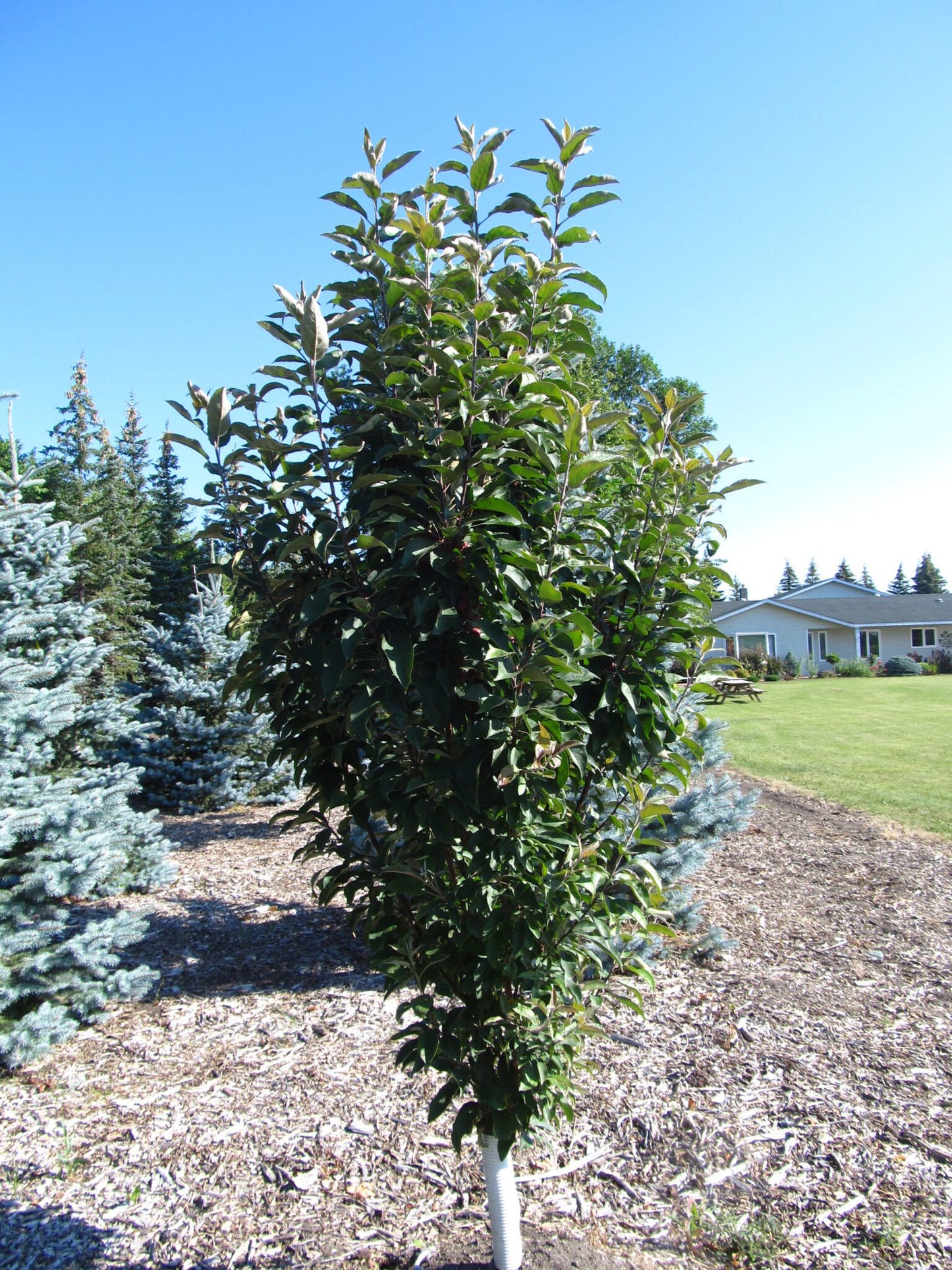Riverdene Garden Center
Emerald Spire Crabapple
Emerald Spire Crabapple
Couldn't load pickup availability
Malus ‘Jefgreen’ Emerald Spire®
Emerald Spire Columnar Crabapple is a narrow, upright ornamental tree that offers green foliage, pinkish-purple flowers, and small red fruit that persist into winter. It is a cold-hardy (Zone 2-3), low-maintenance, disease-resistant tree that is ideal for small yards, privacy screens, and urban landscapes in Southwest Saskatchewan. Its dense, columnar growth makes it a great space-saving alternative to traditional crabapples.
Planting & Location
- Hardiness Zone: 2-6 (perfect for harsh prairie winters)
- Mature Size: 15-20 feet tall, 6-8 feet wide
- Growth Rate: Moderate (12-18 inches per year)
- Sunlight Needs: Full sun (6+ hours of direct sunlight per day)
-
Soil Preference:
- Prefers well-drained, loamy soil.
- Tolerates clay, sandy, and slightly alkaline soils.
- Avoid poorly drained or waterlogged soil—crabapples dislike excess moisture.
- Spacing: 6-8 feet apart for a hedge, 8-10 feet apart for individual trees.
Watering
- Young Trees (First 2 Years): Water deeply once per week to establish roots.
- Established Trees: Drought-tolerant; water every 2-3 weeks in dry periods.
- Avoid Overwatering: Let the topsoil dry between waterings to prevent root rot.
Fertilizing
- First Year: No fertilizer needed—focus on root development.
-
Mature Trees:
- Apply a slow-release balanced fertilizer (e.g., 10-10-10) in early spring.
- Organic alternative: Compost or aged manure in spring.
Pruning & Maintenance
- Best Time to Prune: Late winter to early spring, before new growth starts.
-
How to Prune:
- Remove dead, diseased, or crossing branches for better airflow.
- Maintain a strong central leader for an upright form.
- Minimal pruning needed—naturally holds its narrow, columnar shape.
Pest & Disease Management
Disease-Resistant: Emerald Spire has strong resistance to apple scab and fire blight, which makes it lower maintenance than many crabapples.
Common Pests:
-
Aphids – Cause curled leaves and sticky honeydew.
- Solution: Spray with insecticidal soap or encourage natural predators (ladybugs).
-
Apple Maggot – Larvae burrow inside fruit.
- Solution: Use sticky traps and clean up fallen fruit.
-
Tent Caterpillars – Create web-like nests in branches.
- Solution: Prune out nests and destroy them.
Common Diseases:
-
Apple Scab – Causes blackened leaves and fruit spots.
- Solution: Choose resistant varieties like Emerald Spire; apply fungicide if needed.
-
Fire Blight – Causes blackened, scorched-looking branches.
- Solution: Prune infected areas 8-12 inches below infection and disinfect tools.
-
Powdery Mildew – White fungal growth on leaves.
- Solution: Improve air circulation and remove infected leaves.
Winter Protection
- Young Trees: Wrap trunks with tree guards or burlap to prevent sunscald and frost cracks.
- Mulching: Apply 2-4 inches of mulch around the base to insulate roots.
- Deer & Rodents: Use tree guards if browsing is an issue.
Landscape Uses
Perfect for small yards and tight spaces
Low-maintenance and disease-resistant
Beautiful pinkish-purple spring flowers attract pollinators
Dense, upright form makes a great privacy screen or hedge
Small red fruit persists into winter, feeding birds
Additional Notes:
- Emerald Spire Columnar Crabapple is an excellent ornamental tree for modern landscapes, small gardens, and urban settings.
- Lifespan: 20-40 years with proper care.
- Works well in row plantings, as a vertical focal point, or along driveways and walkways.
Photo courtesy of Jeffries Nurseries
Share


